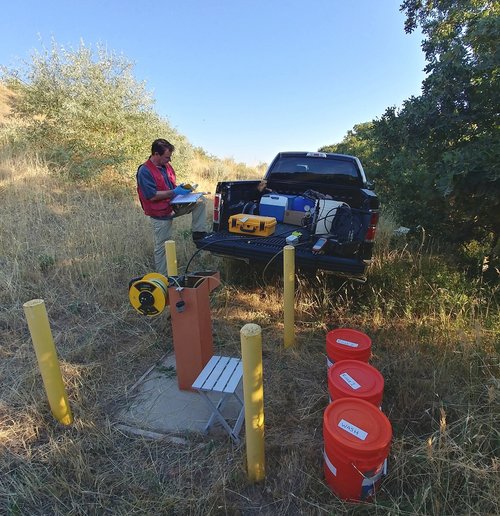In recent years, concerns about per- and polyfluoroalkyl substances (PFAS) in drinking water have heightened, prompting regulatory bodies to take action. The Environmental Protection Agency (EPA) has been at the forefront of addressing this issue, and their latest move involves establishing new standards for safe drinking water. In this blog post we will go into more details on what the new EPA standard means for water quality and environmental consulting in Utah, and the rocky mountain region.
What Are PFAS?
Per- and polyfluoroalkyl substances, or PFAS, are a group of man-made chemicals that have been used in various industrial and consumer products since the 1940s. They are resistant to heat, water, and oil, making them useful in products like non-stick cookware, stain-resistant fabrics, firefighting foam, and more. However, their persistence and prevalence in the environment and potential health effects have raised significant concerns.
Why Are PFAS Concerning?
PFAS have been linked to a range of health problems, including many forms of cancer, immune system dysfunction, and developmental delays in children. These chemicals don’t break down easily in the environment or in the human body, leading to accumulation over time. This means that even low levels of exposure through regular drinking water can build up and pose health risks over time.
EPA’s New PFAS Drinking Water Standard:
Last week, the EPA announced a first-ever national standard for drinking water. This new standard aims to remove ‘forever chemicals’, PFAS, from all drinking water in the nation. Recognizing the potential risks associated with PFAS exposure, the new standard established legally enforceable levels for several PFAS known to occur individually and within drinking water as mixtures. The rule sets a maximum contaminant limit (MCLs) for five individual PFAS: Perfluorooctanoic Acid (PFOA), perfluorooctane sulfonic acid (PFOS), perfluorononanoic acid (PFNA), perfluorohexanesulphonic acid (PFHxS), and hexafluoropropylene oxide dimer acid (HFPO-DA), (also known as “GenX Chemicals”, C3 Dimer Acid, or FRD-903 ). It also includes MCls for mixtures of any of two or more of PFNA, PFHxS, PFBS, and “GenX chemicals.” These MCLs represent the concentration of these chemicals in drinking water that is deemed safe for human consumption over a lifetime.
This step from the EPA estimates that roughly 6-10% of current public drinking water systems may need to take action to reduce the PFAS to meet the new standards. With the current Investing in America program, the EPA is announcing nearly $1 billion in newly available funding for states and territories to implement PFAS testing and treatment. This includes public water systems, as well as privately owned wells and water systems. This small portion of funding is part of a large program aimed to help communities with impacted drinking water from PFAS and other potential contaminants. By setting limits on PFAS levels in drinking water, the EPA aims to reduce exposure to these harmful chemicals and mitigate associated health risks that come with long term exposure.
However, it’s important to note that PFAS contamination is a widespread issue, and addressing it will require concerted efforts at the federal, state, and local levels. In addition to setting standards, it’s crucial to invest in infrastructure upgrades, water treatment technologies, and pollution prevention measures to effectively tackle PFAS contamination.
Moving Forward:
Although the PFAS drinking water standard is a positive development, there is still much work to be done to address PFAS contamination comprehensively. In the realm of monitoring and testing for PFAS in water systems, Semper Environmental is at the forefront of adopting new sampling methodologies and staying updated on the latest developments. As leading environmental investigation and remediation consultants for Salt Lake City, and the Mountain West Region, Semper recognizes the importance of employing state-of-the-art techniques and equipment to accurately assess PFAS contamination levels. This commitment to staying abreast of advancements in the field ensures that we can provide clients with reliable and comprehensive data regarding PFAS presence in their water systems. From close affiliations with approved laboratories with cutting-edge analytical instruments, to training staff on emerging testing and sampling protocols, the professionals at Semper Environmental prioritize staying ahead of the curve to effectively address the challenges posed by PFAS contamination. By embracing innovation and continuous learning, Semper remains a trusted partner in safeguarding water quality and protecting our clients and public health from the harmful effects of PFAS exposure.
Conclusion:
The establishment of the new EPA PFAS drinking water standard represents an important milestone in the fight against PFAS contamination. By setting limits on PFAS levels in drinking water, the EPA is taking proactive steps to protect public health and ensure the safety of our water supplies. However, addressing PFAS contamination will require sustained efforts and collaboration at all levels of government, as well as continued investment in research and technology. Environmental remediation for PFAS contamination in areas near the Salt Lake Valley has been an ever-growing industry. With this new step and requirements from the EPA, we will continue to work towards ensuring safe levels for our drinking water.
Sources: Environmental Protection Agency. (2024, April 10). Biden-Harris Administration Finalizes First-Ever National Drinking Water Standard to Protect 100M People from PFAS Pollution. United States Environmental Protection Agency. https://www.epa.gov/newsreleases/biden-harris-administration-finalizes-first-ever-national-drinking-water-standard




